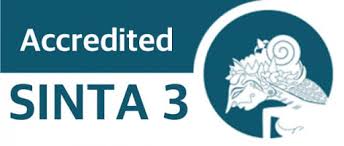Reviewers Guidelines
The article's length ranges from 10-16 pages, including references. 4500 of 6500 words
- The background of the study;
- State of the art, relevant research to justify the novelty of the manuscript;
- Gap analysis, novelty statement;
- Hypothesis or problem statement (optional);
- Approach to resolve the problem; and
- The aim of the study.
- The method is written clearly, so then other researchers can replicate the experiment or research with the same result;
- Not only describe the definition of terms but also describe how to conduct the research;
- Describe the location, participant, research instrument, and data analysis;
RESULT. The main provisions in writing research or study findings are as follows: 1) present the research or study findings briefly, while still providing sufficient detail to support conclusions, 2) may use tables or pictures, but do not repeat the same information, by providing narration at the bottom of the table or picture so that the reader can understand the tables or pictures presented by the author, and 3) each research finding or study must be interpreted properly using standard spelling. Data analysis processes such as statistical calculations or hypothesis testing processes need not be presented, only the results of the analysis and the results of hypothesis testing need to be reported. Tables or graphs can be used by the author to describe the results of research or studies found verbally, by providing narration or comments at the bottom of the tables or graphs by referring to previous research results contained in reputable scientific journals both internationally and nationally.
DISCUSSION. The discussion section aims to: (1) answer the problem formulation and research or study questions; (2) shows how the findings were obtained or found; (3) interpret the findings; (4) linking research findings or studies with established knowledge structures; and (5) bring up new theories or modifications to existing theories, by comparing the results of previous studies that have been published in reputable journals. In answering the formulation of the problem or research questions, the results of the study must be concluded explicitly regarding previous research. Interpretation of research findings or studies can be done using empirical logic based on existing theories or previous research results in reputable journals both international and national, while findings in the form of reality in the field are integrated or linked to the results of previous studies or with existing theories. For this purpose, the author is required to refer to international journals (Scopus) and national journals (Sinta).
Conclusion
- Answer the objectives of the research;
- Implication or recommendation (optional);
- Written in a paragraph, not in bullet/numbering




